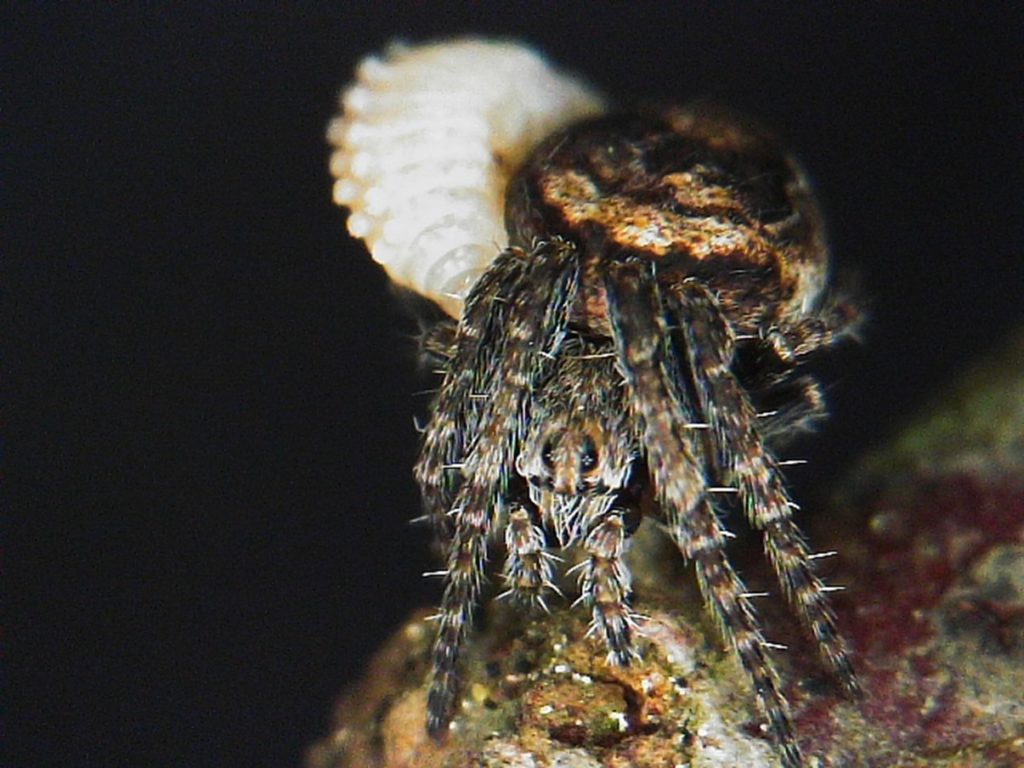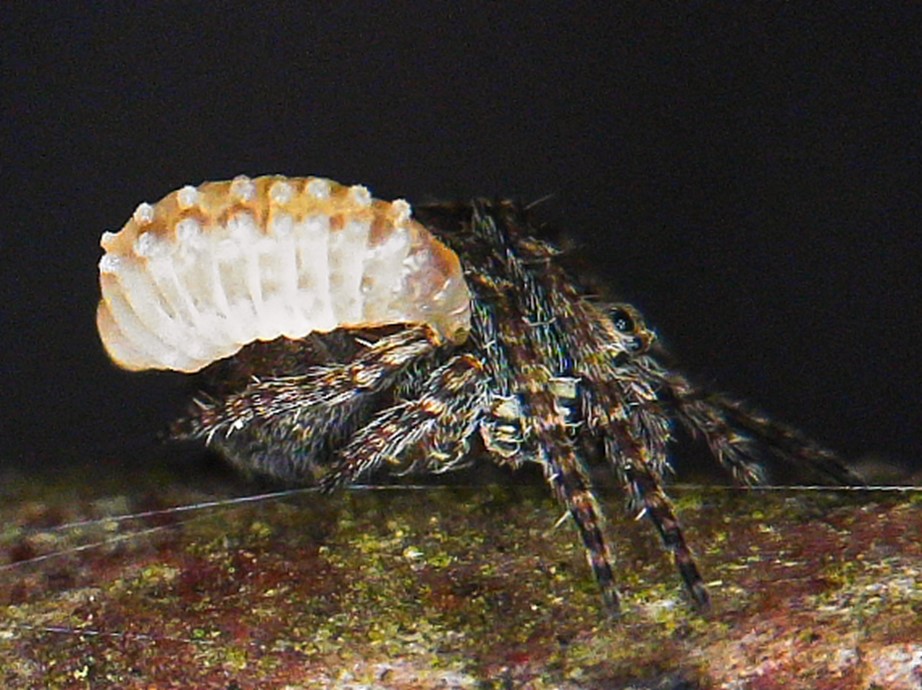by Brady Karg
It was an early afternoon on a late spring day, and I was out trying to photograph any last stragglers for spring bird migration. The day was going well as I checked off a pair of Great Crested Flycatchers, Indigo Buntings, Black-throated Green Warblers, Black-throated Blue Warblers, Ovenbirds, a Broad-winged Hawk, and some recently fledged Barred Owls! As I was making my way back on the trail, I felt the strong pull of a spider web brush against my arm. I stopped and looked around to see a tiny spider dangling below a leaf beside me in the tangled remains of its web. As I leaned in closer, I noticed what looked to be a predator and prey encounter with the spider holding a large insect in its grasp. I soon realized the situation was something much more sinister.
Upon closer inspection, it was apparent the bug was feasting on the spider! The mystery creature was obviously some kind of parasite, but what kind exactly? What kind of spider was being preyed upon? I then did some digging to find out more about this parasitic relationship.
In a conversation with Andrea Kautz, an entomologist at Powdermill Nature Reserve, I learned that this spider is in the subfamily Araneinae or Typical Orb weavers. After posting my observation to iNaturalist, a narrower ID was suggested, the Genus Eustala. This genus covers a large variety of orb weavers, spiders found in a wide variety of habitats including fields, forests, and marshes. The colors and patterns of these spiders vary, but the females are noted for having a distinct dorsal hump.
So, what was eating this spider? Andrea informed me that the parasite is likely the larva of a parasitic wasp in the family Ichneumonidae. These are slender wasps, with many bearing orange and black coloration. The Ichneumonidae are known to parasitize both egg sacs and adult spiders.
This information explained much of what I had seen. Below are two pictures I took using a digital microscope camera.


In each you can see the larva of the parasitic wasp attached to the orb weaver spider. This situation is the result of an adult wasp in the Pimplinae subfamily laying an egg in this spider. The egg hatched, and the now much larger larva is continuing to feast on nutrients from the spider. The larva will continue to feed on the spider until it is ready to metamorphose into its pupal stage, and then into its adult form. The spider, unfortunately, will not survive this parasitic relationship.
Our natural world is full of fascinating and unique relationships such as this wasp and spider. Always keep your eyes peeled in case you happen to stumble upon something such as this!
Brady Karg is an intern at Powdermill Nature Reserve, Carnegie Museum of Natural History’s environmental research center.
Related Content
Oh Deer, That’s A Lot of Parasites!
Carnegie Museum of Natural History Blog Citation Information
Blog author: Karg, BradyPublication date: August 26, 2022
